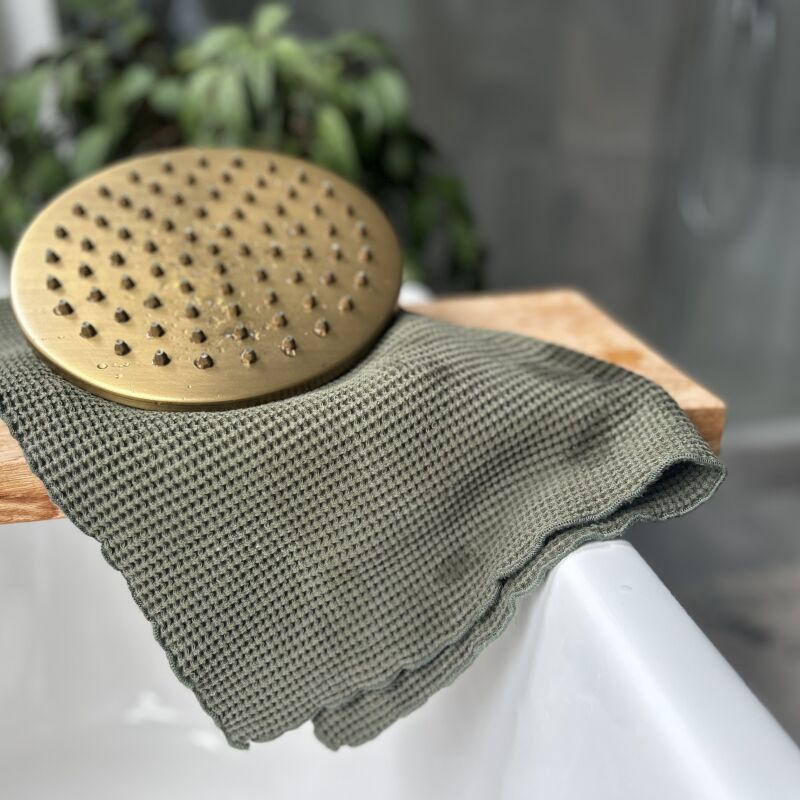Over the course of doing research for our new book, we learned so much about how to design our homes—and live our lives in them—in a more sustainable, climate-aware way. All of us at Remodelista have adopted new household routines as a result (read about them here). One of the most surprising facts we learned? That something as simple and essential as laundering our clothes can lead to extreme pollution in the form of microplastic fibers in our waterways.
When you wash anything made of synthetic fabrics—e.g., a fleece jacket, spandex tights, microfiber cleaning cloth, or polyester mix sheets—the spinning and sloshing of the washing machine can cause microplastic fibers, invisible to the naked eye, to shed and enter our wastewater and eventually the environment and food chain. According to a recent study, synthetic textiles are responsible for 35 percent of marine microplastic pollution, making them the worst offender. Another study showed that our modern-day laundry routine leads to more than half a million tons of microplastics released into oceans every year, the equivalent of almost 50 billion plastic water bottles. These are sobering stats—and good reminders to buy untreated natural materials when possible.

Something else we can do? Stop the shed at the wash stage. Because it’s nearly impossible to avoid synthetic fibers these days (particularly if you have sports-loving kids) and because even natural fabrics are often treated with chemicals, the best thing you can do to lessen microplastic pollution in the environment is to prevent microfibers from escaping your washing machine.
Unfortunately, there is currently just one washing machine on the market with a built-in microfiber filter (Grundig’s FiberCatcher). So until appliance companies are compelled to make machines with filters in place—France has passed legislation that stipulates all new washing machines, starting in 2025, must include microfiber filters, but there are currently no such efforts at the state or federal level in the US—we need to rethink our laundry routines. Wash less frequently and when we do, make sure loads are full (the lower the ratio of water to laundry, the less shedding, studies have shown) and choose cold water (which is gentler on clothing than hot water, saves energy, and generally does the trick). In addition, consider introducing one or more of these filtering products into your routine. Here are three to check out.
External Filter

Washing Bag

Laundry Ball

For more on a sustainable laundry routine, see:
- The Germantown Laundromat: An Eco-Minded Gathering Spot in the Hudson Valley, Mending Services Included
- Domestic Science: 8 Thin-as-Paper Laundry Detergent Sheets, Eco Edition
- Remodelista Reconnaissance: A Collapsible Drying Rack in a London Laundry Room






Have a Question or Comment About This Post?
Join the conversation